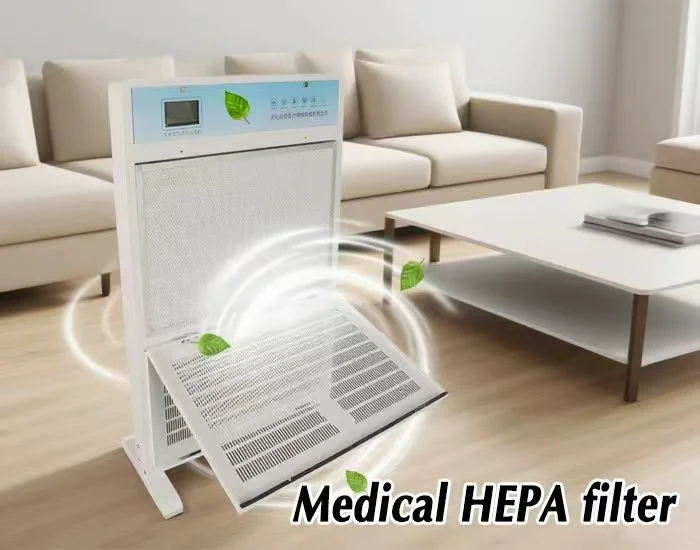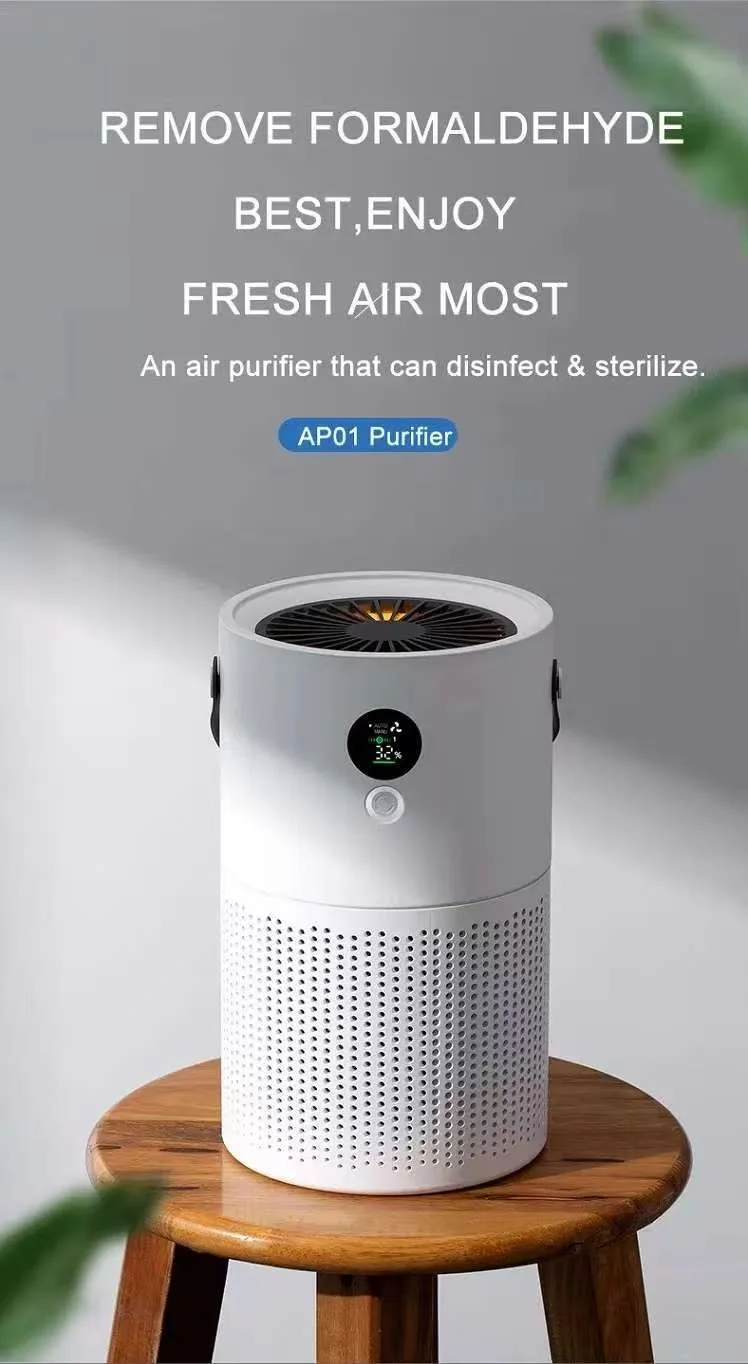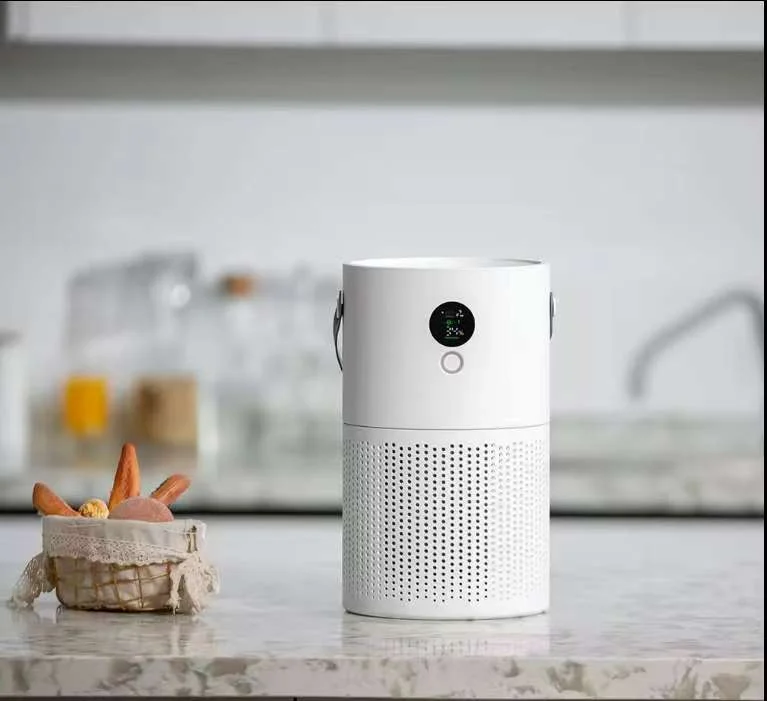Hit enter to search or ESC to close
13 October 2025
Clean air is essential to a healthy home. While most people focus on cleaning surfaces, floors, and furniture, they often overlook one of the most important elements of indoor hygiene — the air we breathe. Invisible pollutants such as bacteria, viruses, mold spores, allergens, and volatile organic compounds (VOCs) can circulate through your home every day. These airborne contaminants not only affect your health but can also worsen allergies, cause respiratory problems, and increase the risk of infections.
So, if you’ve ever wondered, “How can I disinfect the air in my house?”, the answer lies in adopting modern air cleaning technologies such as the air disinfection machine, air sanitizer machine, and air sterilization machine. These advanced devices are designed to eliminate harmful microorganisms, remove pollutants, and ensure that every breath you take is safe and clean.
Airborne germs can travel easily from one person to another through sneezing, coughing, or even talking. In closed environments like homes, poor ventilation and high humidity can make it even easier for these particles to accumulate. Traditional air purifiers can help remove dust and odors, but they often lack the ability to kill or deactivate microorganisms.

That’s where the air disinfection machine comes in. Unlike basic filters, air disinfection systems use multiple layers of protection — from HEPA and activated carbon filters to UV-C light and ionization technology — to destroy bacteria and viruses in the air.
Disinfecting your air at home helps:
Prevent the spread of viruses and germs.
Reduce allergens such as pollen and pet dander.
Neutralize unpleasant odors.
Create a fresher, safer living environment for children, elderly family members, and pets.
In essence, investing in air disinfection is not just about cleanliness; it’s about safeguarding your family’s health.

An air disinfection machine is designed to go beyond simple filtration by actively neutralizing pathogens and pollutants in the air. These machines often use a combination of advanced technologies:
HEPA Filtration – Removes 99.97% of particles as small as 0.1 microns, including bacteria, dust, and pollen.
Activated Carbon Layer – Absorbs harmful gases, smoke, and odors.
UV-C Sterilization – Uses ultraviolet light to kill viruses and bacteria at the DNA level.
Ionization or Plasma Sterilization – Breaks down airborne pollutants and eliminates bioaerosols.
This multi-step approach ensures that the air in your home remains both clean and sterilized. Modern air disinfection devices are also equipped with sensors that detect air quality and automatically adjust fan speed or disinfection power based on real-time data.
These machines are especially useful during flu season or in households with young children or elderly members, as they can reduce exposure to common airborne infections.

While air disinfection machines focus on sterilizing air, an air sanitizer machine provides continuous purification for everyday indoor air quality maintenance. It not only removes contaminants but also helps reduce the microbial load in your living space.
Air sanitizer machines are ideal for homes, offices, and schools because they run quietly and efficiently. Many use ozone-free technologies such as UV-C or photocatalytic oxidation (PCO), which are safe for continuous use around people and pets.
These systems are particularly beneficial for:
Allergy sufferers – Reducing airborne triggers like dust mites and mold spores.
Pet owners – Eliminating dander and odors.
Smokers – Neutralizing tobacco smoke and harmful chemicals.
Urban households – Filtering pollutants and vehicle emissions that seep indoors.
For families wondering how to disinfect the air in the house naturally, an air sanitizer machine is one of the safest, most energy-efficient options available.
When it comes to achieving medical-grade air cleanliness, an air sterilization machine offers the most advanced level of protection. These machines are commonly used in hospitals, clinics, laboratories, and cleanrooms — but now, many models are also available for home use.
Unlike basic air purifiers, an air sterilizer not only traps particles but also destroys them completely. It uses powerful UV-C lamps, plasma technology, or photocatalytic oxidation to kill pathogens such as influenza viruses, E. coli, and mold spores. Some even use a process known as “active oxygen sterilization,” which releases trace amounts of ozone to sanitize the air in unoccupied rooms.
The benefits of installing an air sterilization machine in your home include:
Complete microbial elimination – Reduces up to 99.9% of airborne bacteria and viruses.
Odor removal – Keeps the air smelling fresh by breaking down organic compounds.
Safe and efficient operation – Designed for long-term use without harmful emissions.
Improved well-being – Reduces the risk of respiratory illnesses and boosts comfort.
If you’re serious about maintaining a truly sterile indoor environment, combining an air sterilization unit with a regular sanitizer or disinfection machine can give you full-spectrum protection.
When selecting the best air disinfection device, consider the following factors:
Room Size: Choose a model with an appropriate coverage area for your home.
Technology Type: UV-C and HEPA filters are best for virus elimination, while activated carbon helps with odors and gases.
Noise Level: Opt for quiet machines for bedrooms and living spaces.
Maintenance: Check filter replacement intervals and cleaning requirements.
Certifications: Look for safety and performance certifications such as CE, FCC, or RoHS.
A reliable air disinfection device should be easy to maintain, energy-efficient, and capable of running continuously without losing effectiveness.
If you’ve been asking yourself, “How can I disinfect the air in my house?”, the answer is simple: invest in the right technology. Modern air disinfection machines, air sanitizer machines, and air sterilization machines are designed to create safe, healthy environments by eliminating airborne pollutants and pathogens.
Clean air isn’t just a luxury — it’s a necessity. With the right air disinfection system in place, you can enjoy peace of mind knowing that your family is breathing air that’s fresh, pure, and free of harmful microorganisms. Whether you live in a bustling city or a quiet countryside home, clean air is the foundation of a healthier life.
“How Can I Disinfect the Air in My House? A Complete Guide to Air Disinfection, Sanitizer, and Sterilization Machines”
You can disinfect your home’s air by using an air disinfection machine that combines HEPA filtration, UV-C light, and ionization technology. This ensures the removal and destruction of bacteria, viruses, and allergens for cleaner, safer indoor air.
An air disinfection machine is designed to sterilize and kill microorganisms, while an air sanitizer machine maintains daily cleanliness by continuously removing contaminants and odors. Using both provides the best air hygiene results.
Yes, most air sterilization machines are safe for home use. They use UV-C or plasma technology to destroy pathogens without emitting harmful chemicals. Always follow the manufacturer’s guidelines for safe operation.
It’s recommended to run your air sanitizer machine or air disinfection machine continuously in occupied spaces, especially during allergy season or when someone at home is sick. Many modern devices automatically adjust to air quality levels.
Yes. An air disinfection machine with an activated carbon filter effectively removes odors from pets, smoke, or cooking, while the HEPA filter captures allergens like pollen and dust, making the air cleaner and more comfortable.